Vitra’s Typecasting exhibition prods at the way we project versions of ourselves online and in person, and studies the potential effects of societal changes on furniture typologies.

April 20th, 2018
Are you a slasher or a dreamer? A compulsive organiser or an athlete? And what kind of furniture would best suit your behavioural profile? Vitra is prompting some serious self-assessment at Fuorisalone 2018 with a panoramic exhibition at La Pelota.
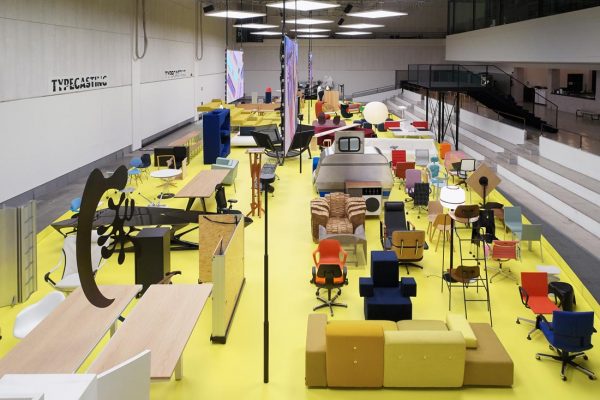
Typecasting: An Assembly of Iconic, Forgotten and New Vitra Characters was curated and designed by Paris-based Austrian curator and designer Robert Stadler in his first collaboration with the brand. On a vivid yellow plinth overlooked by an observation platform, the exhibition presents 200 objects ranging from historic Vitra pieces and prototypes from the Vitra archives to current and new products, special editions, rejects and future visions. The objects are grouped but the zones are unmarked; an exhibition catalogue presents an explanatory diagram.
The exhibition builds on the ‘transversality’ of furniture typologies that Vitra CEO Nora Fehlbaum discussed with us in a recent interview. The merging of living, working and public spaces these days makes furniture typologies fluid, she said. So rather than the typical function-based typological categories (seat, table, cabinet, for example) or the simpler classification by time period, Typecasting looks at furniture’s social function in today’s society.
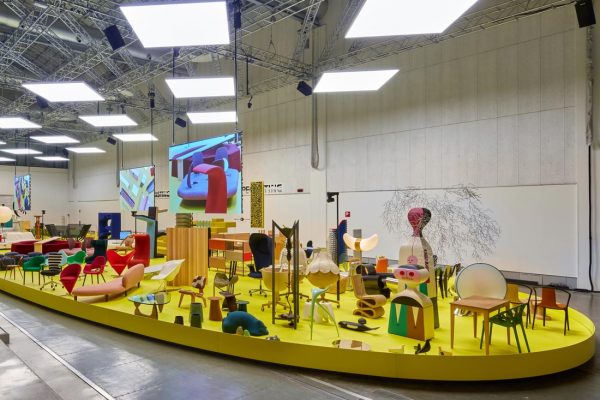
Stadler assessed the Vitra collection (particularly chairs) through the lens of people’s stereotypical behaviour patterns and personality profiles. The display is “as much about furniture as it is about us,” he wrote in his curatorial statement, elaborating: “Along with its practical task, furniture has always had a representational function. As such, chairs can typically be read as personalities or portraits.” Typecasting presents furniture pieces as props for self-portrayal.
At the heart of his curatorial approach is Stadler’s recognition that the selection of a specific chair is also a personal act of image cultivation. He presents objects as characters belonging to certain ‘communities’, reflecting contemporary modes of self-staging as well as the strategies of collecting friends and ‘likes’ on social media. “Looking at familiar objects through the lens of self-staging and image cultivation sharpens the perception of furniture’s role in defining our personal and social profiles,” he explains.
So who is in Vitra’s cast of characters?
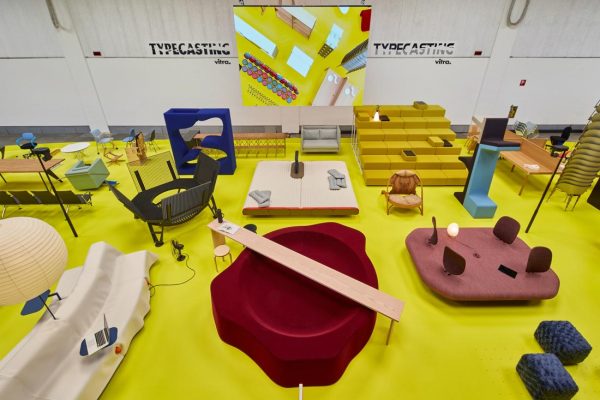
‘The Communals’: Objects that invite people to gather through their shapes, materials, geometries or configurability. New models for communal living (beyond the traditional family dwelling) are emerging in shared spaces, and the sofa in particular has become a new stage for living and working together. ‘The Communals’ forms the centrepiece of Typecasting, and includes six special design investigations into potential new forms for the ‘communal sofa’ by Ronan and Erwan Bouroullec, Konstantin Grcic, Edward Barber and Jay Osgerby, Robert Stadler and Commonplace Studio.
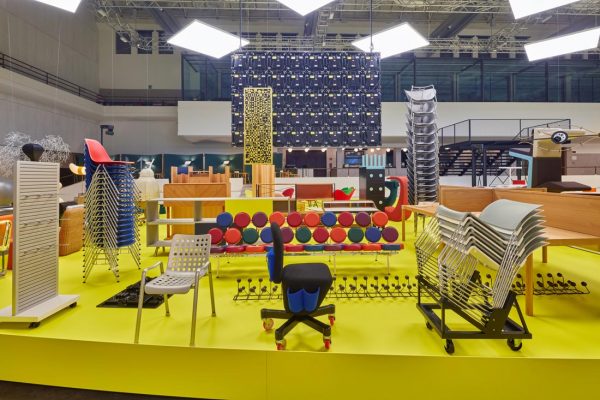
‘The Compulsive Organisers’: Objects that reflect the contemporary need to meticulously organise our increasing accumulation of data and things. Stacking chairs, hooks, cabinets and a clock are presented in this community. Each piece is a form of micro-architecture.
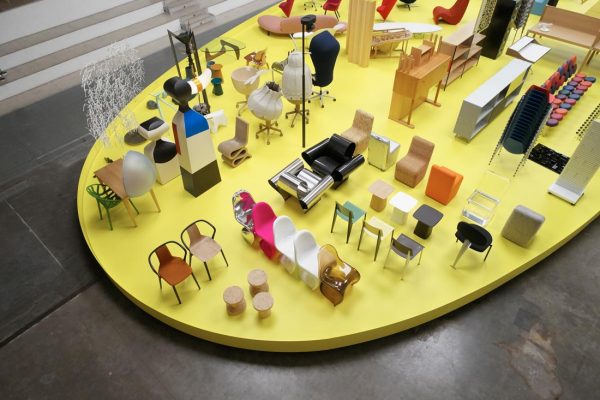
‘The Slashers’: Chairs that recall the way many of us take on multiple and often diverging jobs and activities in response to disorientation and economic stability. The chairs in this community can be produces in various materials and with variations in shape.
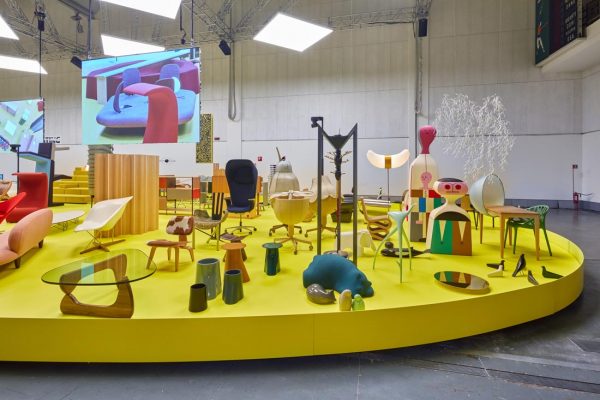
‘The Dreamers’: Objects that retreat into imaginary worlds, often with reference to nature. These objects (many of them small in size) enchant the user with a feeling of escapism.
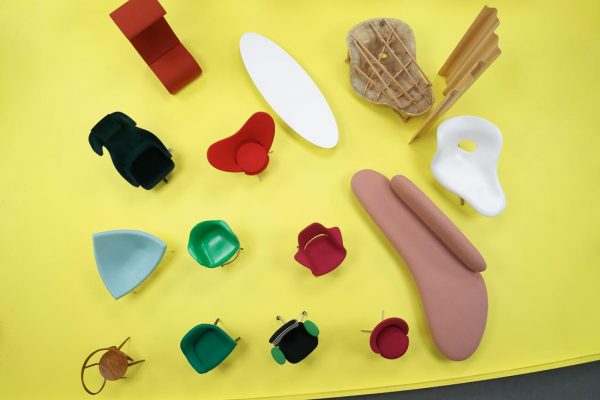
‘The Beauty Contestants’: Objects that flaunt their looks. Often, the objects in this community exhibit fluid lines and are easily recognisable. Many of them date to the 1960s and ’70s.
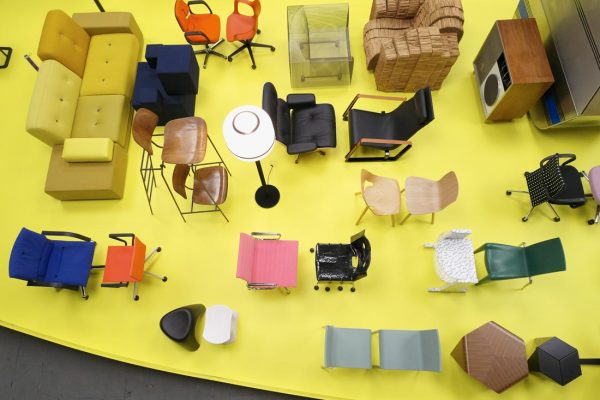
‘The Dating Site Encounters’: A series of objects presented in pairs (or ‘couples’) that share an aesthetic, function, details or features. The pairings enhance the individuality of each object. Sometimes they clash – like a bad date.
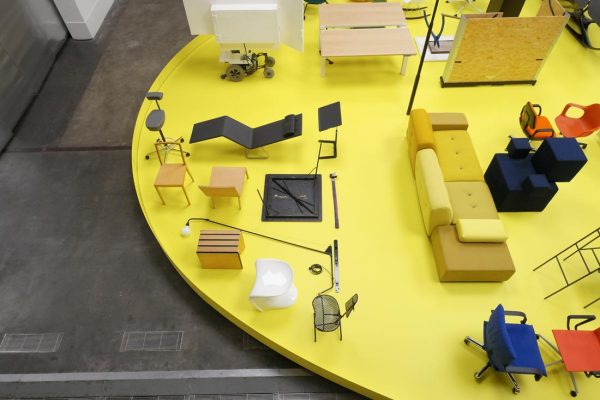
‘The Spartans’: Objects that probe the minimum requirements for a piece of furniture by discarding extraneous elements. This community takes a critical perspective toward over-consumption.
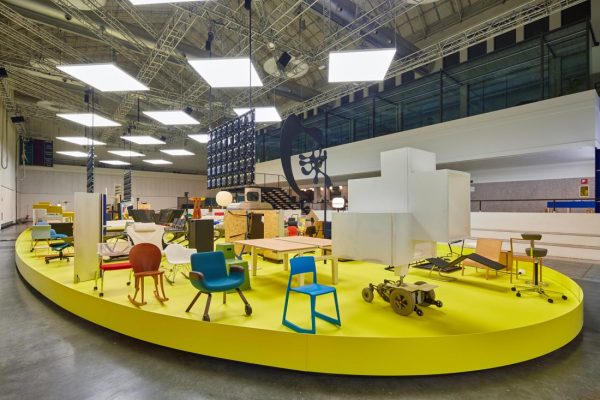
‘The Restless’: Objects that move or encourage the user to move. This community knows the value of physical movement (for health and a creative mind set), and is wary that today many of us travel only through the screen.
‘The Athletes’: Objects whose structural elements are also aesthetic features, often because they test physical limits.
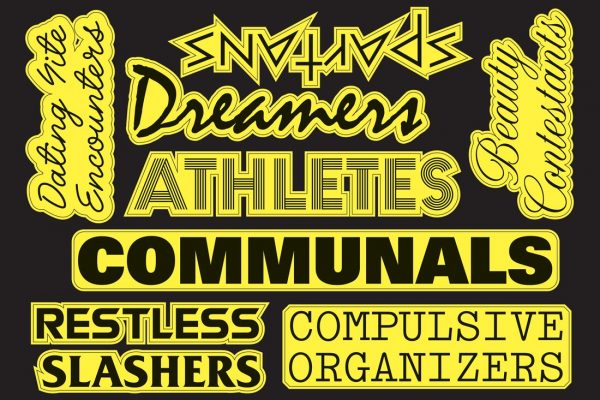
What will visitors take away from Typecasting? Certainly a reminder of the prominence of the self in the present era, but also contemplation of how the functional categorisations of the past are fast becoming invalid. Societal shifts are changing our furniture objects far beyond stylistic considerations. Facing up to how we conduct and present ourselves at a personal level may support the development of furniture that supports the real needs of the time.
Images copyright Vitra.
A searchable and comprehensive guide for specifying leading products and their suppliers
Keep up to date with the latest and greatest from our industry BFF's!

Sub-Zero and Wolf’s prestigious Kitchen Design Contest (KDC) has celebrated the very best in kitchen innovation and aesthetics for three decades now. Recognising premier kitchen design professionals from around the globe, the KDC facilitates innovation, style and functionality that pushes boundaries.

Savage Design’s approach to understanding the relationship between design concepts and user experience, particularly with metalwork, transcends traditional boundaries, blending timeless craftsmanship with digital innovation to create enduring elegance in objects, furnishings, and door furniture.

The Sub-Zero Wolf showrooms in Sydney and Melbourne provide a creative experience unlike any other. Now showcasing all-new product ranges, the showrooms present a unique perspective on the future of kitchens, homes and lifestyles.

Marylou Cafaro’s first trendjournal sparked a powerful, decades-long movement in joinery designs and finishes which eventually saw Australian design develop its independence and characteristic style. Now, polytec offers all-new insights into the future of Australian design.

With Milan 2024 only a few weeks away, we sneak a view of some of the most exciting pieces set to go on show – from lighting design to furniture, here are nine preview products.

An outstanding line-up of participants will contribute to a beautifully curated exhibition in Thailand that delves deep into the collective thinking of architecture in our region and helps set a progressive agenda for the future of design.
The internet never sleeps! Here's the stuff you might have missed

Symbolising a commitment to cultural preservation and timeless design, Powerhouse Castle Hill invites visitors into the stories behind the artefacts in a diverse range of educational and cultural activities.

By adding Muuto to its roster as Singapore’s only retailer, XTRA not only celebrates the enduring appeal of Scandinavian design – it heralds a whole new perspective on its universally appealing legacy.